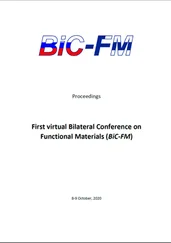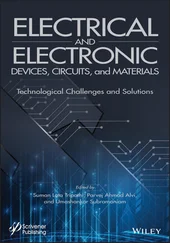The first publication to refer to ‘MTA’ claims that one of the ‘principle [sic] compounds present’ is ‘tricalcium oxide silicate oxide’ [3]. This is not an identifiable substance; indeed, it is chemical nonsense. There are no details given whatsoever of provenance, processing, or analysis. The next paper says, ‘The principle compounds present . . . tricalcium oxide, and silicate oxide’, which speaks of a lack of understanding and an earlier failure to proof‐read (and of very poor reviewing on both occasions), but quite simply neither compound exists, nor can the labels be parsed in a chemically meaningful fashion [4]. Later, we find: ‘All MTA was divided into calcium oxide and calcium phosphate’ – this was for the set material [5]. Calcium oxide cannot survive contact with water, and no calcium phosphate has been seen since. There is not a trioxide anywhere claimed, not does one exist in either the initial or the reacted powder. The word ‘aggregate’ seems merely to have been used as a synonym for ‘mixture’. Can it be that ‘MTA’ simply stands for ‘mixture of three solid oxides’? Even that is quite untrue. (The later‐incorporated so‐called ‘bismuth trioxide’ does not exist as such – the Bi(III) oxide actually used would better be called ‘sesquioxide’, which would be accurate if not currently the standard term). The point of all this is to say that accuracy and precision are required for science and proper communication – to understand what is being done and what might be expected to happen.
It is, of course, necessary to identify products fully and accurately in recording and reporting work, whether clinical or experimental. However – and especially given the number of products subsequently sold – it is clear that the continual use of the trade name as a generic is both wrong and misleading. Genericization, or ‘trademark erosion’, is commonly viewed as detrimental to (and by) the owners of trademarks, but in the contexts of teaching, research, insurance, and standardization, too, it plainly has severe drawbacks. It is proper then to use a label that conveys the essential information succinctly, for a class of materials. It was on the basis of this argument that the term ‘hydraulic silicate cement’ (HSC) was proposed [6]. The qualifying ‘hydraulic’ is necessary and sufficient to distinguish such materials from the now‐obsolete silicate cements which relied on reaction with phosphoric acid ( i.e. a type of acid–base system): water is the reactant for the setting of an HSC. The persistence of ‘MTA’ might reflect chemical ignorance, again, but certainly it represents an unthinking adherence to habit.
The term ‘hydraulic’ is also applied in another context: so‐called ‘hydraulic condensation’, or the technique of forcing a fluid material to fill the space of a root canal by means of, say, a gutta‐percha cone pushed into it. The relationship of the term to hydraulic machinery is obvious: transmission of pressure using a liquid. In that physical sense, it is legitimate [7] (but then a syringe is also ‘hydraulic’). The difficulty seems to be in prevention of extrusion ( v.s .) – simple hydrostatics says that this is likely, and promotional material seems to imply that it is expected. It is for others to decide whether the use of such techniques is appropriate.
1.4 Chemical Interactions and Irrigation
Another weakness is found in the use of irrigants. It is perhaps well known that chlorhexidine reacts with EDTA‐containing products, precipitating material that will clog tubules and canals. But reaction also occurs between chlorhexidine and various other irrigants, producing with NaOCl various chlorinated substances and precipitates, which may be coloured [8]. Hydrolysis to produce 4‐chloroaniline, a toxic substance, has also been suggested [9]. Essentially, the possible chemical interaction between all substances used in any sequential treatment should be considered for adverse effects as a matter of routine. Neither independence, nor complementarity, nor synergy may be assumed. It makes sense to ensure that some rinsing occurs between each irrigant used to minimize risks. Even so, since diffusion into tubules and accessory canals must occur, the efficiency of that rinsing cannot be very great. Reactions in the deeper tissue must be expected. In fact, that is how staining occurs in the first place. Indeed, even a mixture that is advocated ( Chapter 5), HEDP‐NaOCl, clearly has an oxidation reaction proceeding fairly rapidly, although the speculated details appear not yet to be verified [10].
A related issue arises in respect of the formulation of products. It is incumbent on researchers to know what they are working with, the composition of materials, and all setting, mechanical, and physical properties and subsequent degradations. Failure to do so can be considered a lapse. However, it is often singularly difficult to get such information: it does not appear in full in product literature, it does not appear in Material Safety Data Sheets because only known or expected hazardous materials need be declared, and it is often denied to enquirers by the manufacturer on grounds of trade secrets. We are owed full declaration of ingredients in manufactured foodstuffs, even if the wording is obfuscated by industry jargon, so that we can avoid adverse reactions or belief violations. We expect to know what is in cosmetics, perfumes, and anything else we put on our bodies, for similar reasons. Likewise with pharmaceuticals. So why, then, is it permissible to sell products that will be implanted in patients without a full list of ingredients and components? The possibility of direct adverse effects is certainly of great concern (especially because we differ widely in our sensitivities). Given that many materials are used in sequence or are contiguous on completion, that concern is raised to an imperative. It is surely inappropriate, if not arrogant, for a manufacturer tacitly to imply that we do not need to know because they have decided it is safe, and that no regulation is thereby contravened. The regulations must be addressed.
The word ‘activation’ is also frequently misapplied in chemical contexts. Thus, so‐called ‘electrochemically activated water’ is in fact a solution of various substances produced by electrolysis. The water as such is not ‘activated’ in any sense whatsoever. The word is used outside dentistry in a variety of similar contexts, similarly vacuously. The most relevant meaning is the switching of a system into a new state or condition, as for example the electronic transition in a photosensitizer, making it capable of the next step in a reaction. Simply raising temperature, for example, often has clear chemical rate effects – but that is not ‘activation’ (such an approach of course ignores the detrimental effect on vital tissue of temperatures above 42 °C and cannot be recommended for that reason anyway). Likewise, (ultra)sonication cannot ‘activate’ anything in this switching sense. Although it does have some remarkable effects in what is termed ‘sonochemistry’, outcomes in the present context can be attributed simply to mechanical actions, including stirring through induced flow: no specific chemistry is known to have been demonstrated. Care must be taken, of course, when discussing the standard chemical term ‘activation energy’: what is required to overcome an energy barrier to a process. Sonication may well provide that for some chemical processes by means of cavitation effects, but as far as can be ascertained, this does not apply here (cavitation is also mechanically destructive). Laser‐based techniques also appear to be purely mechanical in effect. ‘Activation’ is likewise unhelpfully applied to mere agitation of a reactive solution by stirring or pumping, such as moving an irrigating solution with a gutta‐percha point or the like. Whilst this may allow faster bulk reaction, overcoming the limitation of reliance on diffusive processes to some extent, the actual chemical kinetics of the reaction are totally unaffected. Such magic is not scientific.
Читать дальше












